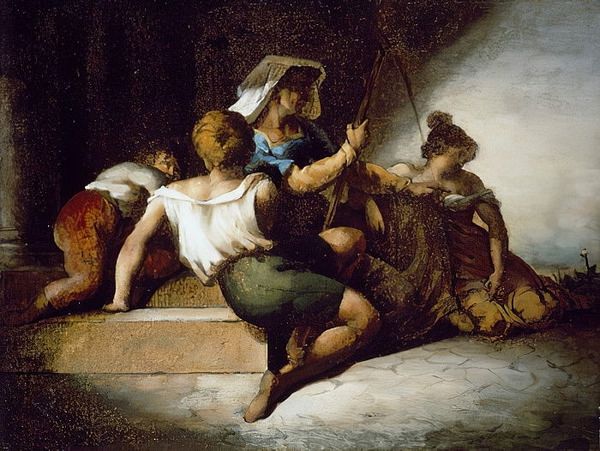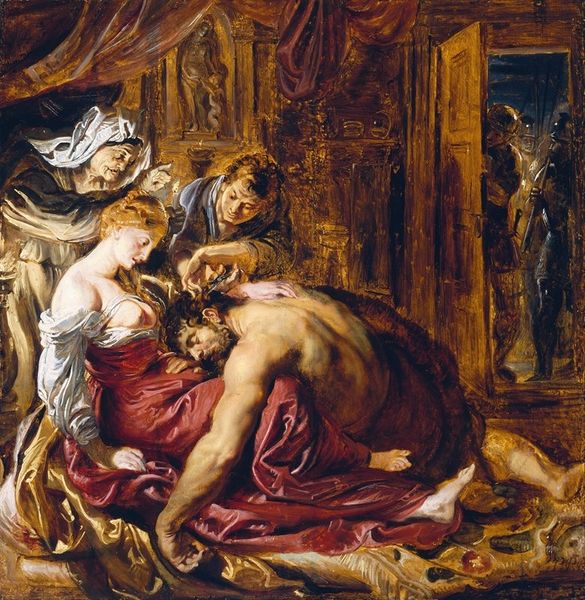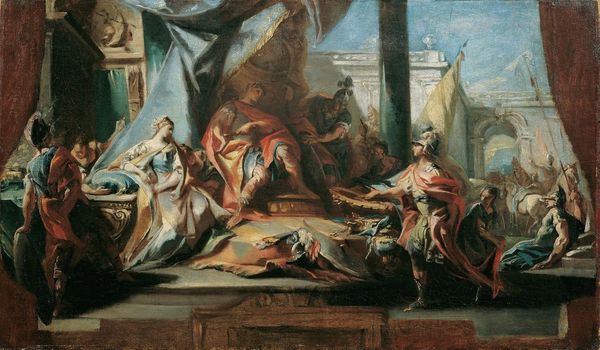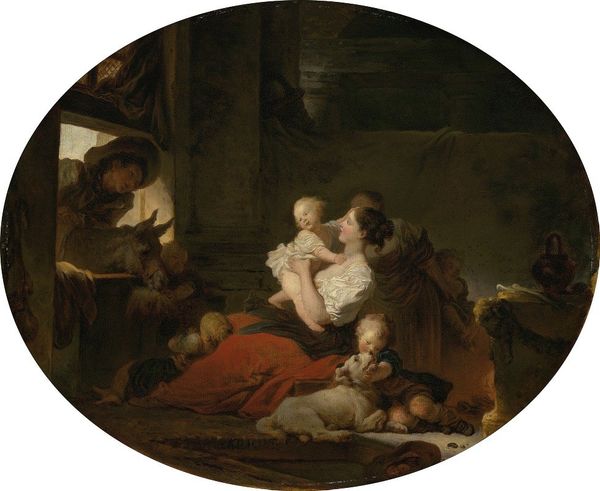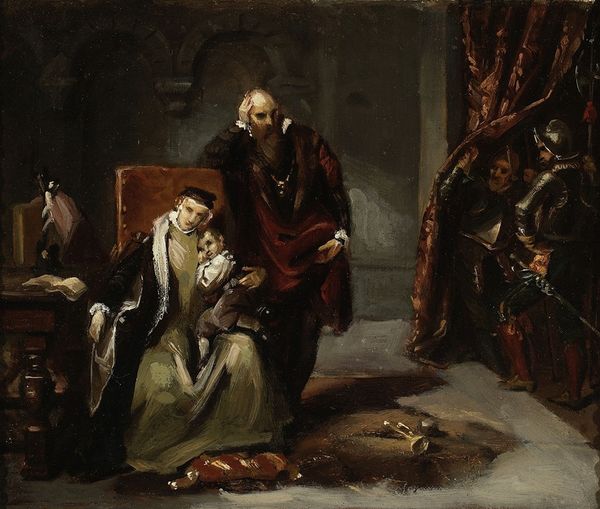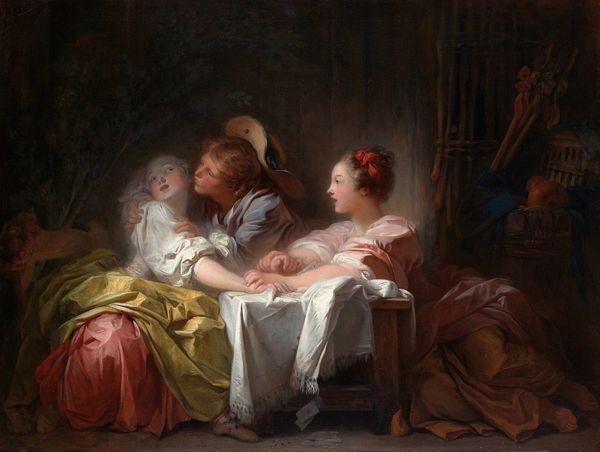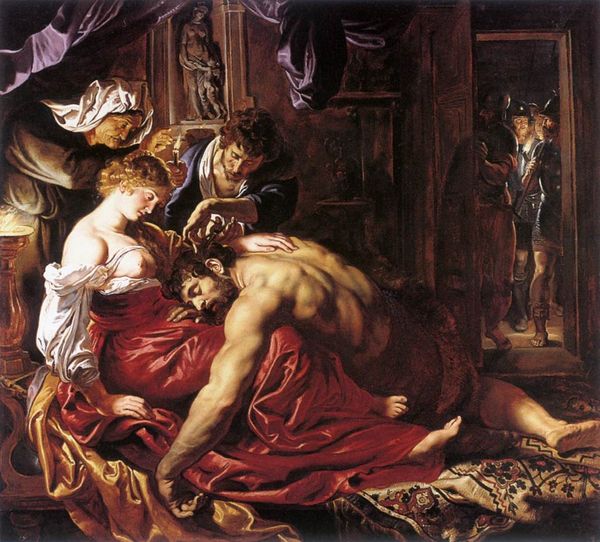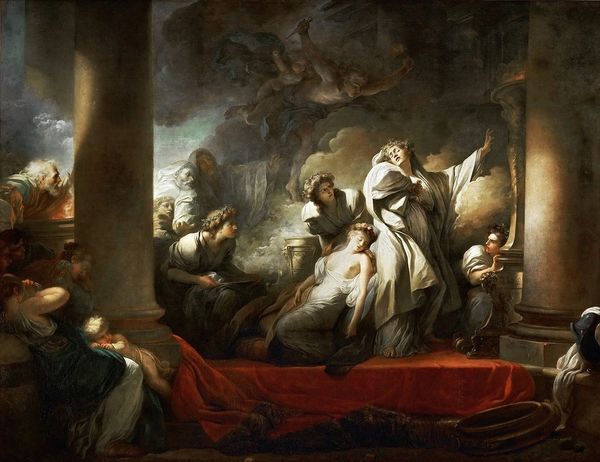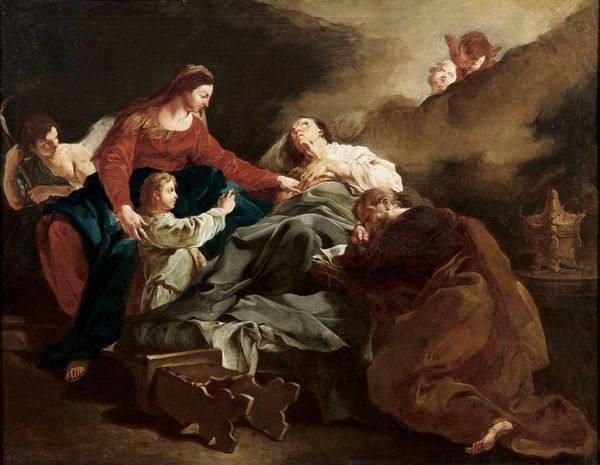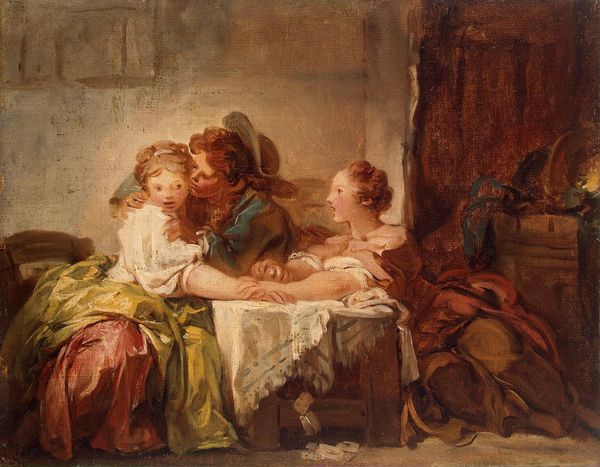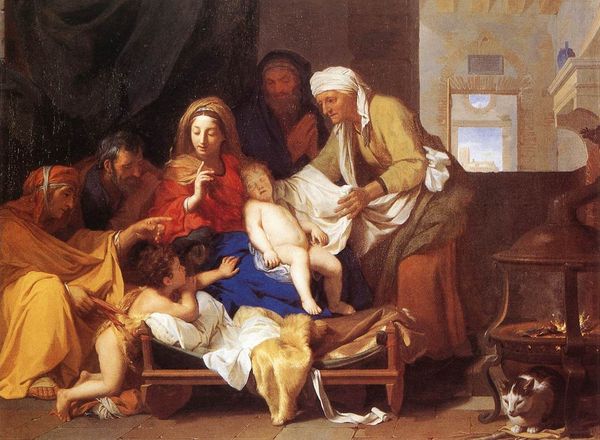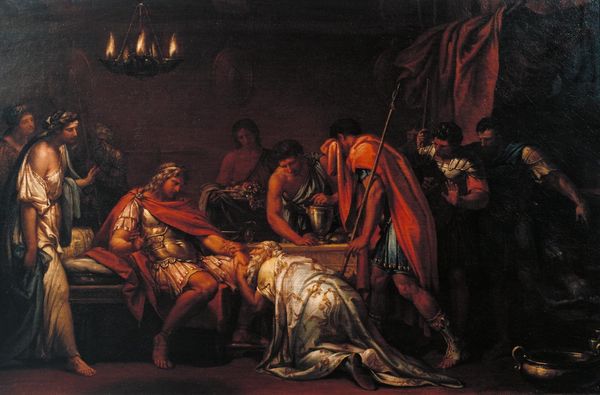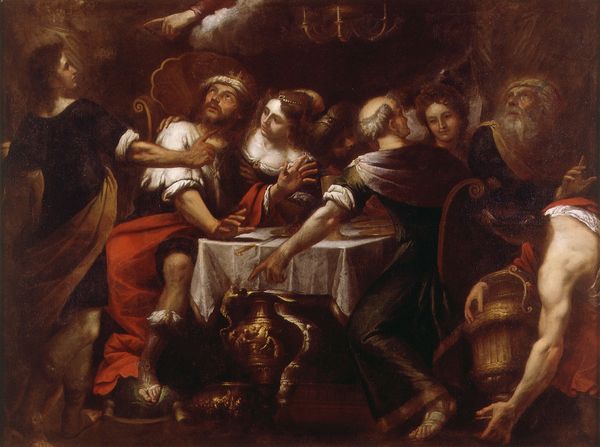
painting, oil-paint
#
portrait
#
narrative-art
#
painting
#
oil-paint
#
figuration
#
oil painting
#
genre-painting
#
rococo
Dimensions: 46 x 55 cm
Copyright: Public domain
Curator: Jean-Honoré Fragonard painted "The Cradle" around 1765. What are your initial thoughts looking at this oil on canvas? Editor: The immediate impact is one of domestic intimacy. The visible brushstrokes add a raw quality, which is striking considering Fragonard’s association with more polished Rococo aesthetics. Curator: Indeed, "The Cradle" holds a lot of potent imagery. Note the grouping of women leaning over the draped hammock-cradle—it suggests a layering of watchful figures, almost like a protective tableau. Editor: Yes, but who are these figures in relation to the person leaning into the cradle by its base? The textures and tones employed on the woven material forming the bassinet itself denote an emphasis on simple materials employed to care for the vulnerable. It looks heavy but functional. Curator: I interpret the different faces peering over as symbolic of anxieties surrounding new life, of fates being determined at birth, perhaps reflecting cultural attitudes to infant mortality. The swaddling also alludes to ideas around protection and vulnerability inherent in early motherhood. Editor: It’s intriguing that you mention that! What is materially absent, that I also find fascinating, is luxury itself: no fine lace, nor silks, rather practical woven textures dominating, making labour of both creating and tending for life visually salient, not obscured, which would seem to me a conscious choice for someone like Fragonard. Curator: And yet Fragonard hasn't abandoned certain Rococo inclinations—notice the almost feverish excitement implied in the way the fabrics twist. They do serve an aesthetic purpose in guiding the eye and contribute to this emotional narrative. The overall effect still exudes something celebratory. Editor: I see your point; the almost urgent arrangement, the flurry of cloth, might distract one from the sheer labor of making and the physical realities underpinning domesticity. It feels ambivalent, straddling this division. Curator: Looking closer at the cultural and spiritual resonances embedded in something so quotidian opens the vista of understanding this scene anew. Editor: Agreed. Material reality gives such unique, embodied perspectives for deeper reflection on themes of class, gender, and societal expectation and in that, this example leaves much to consider.
Comments
No comments
Be the first to comment and join the conversation on the ultimate creative platform.
